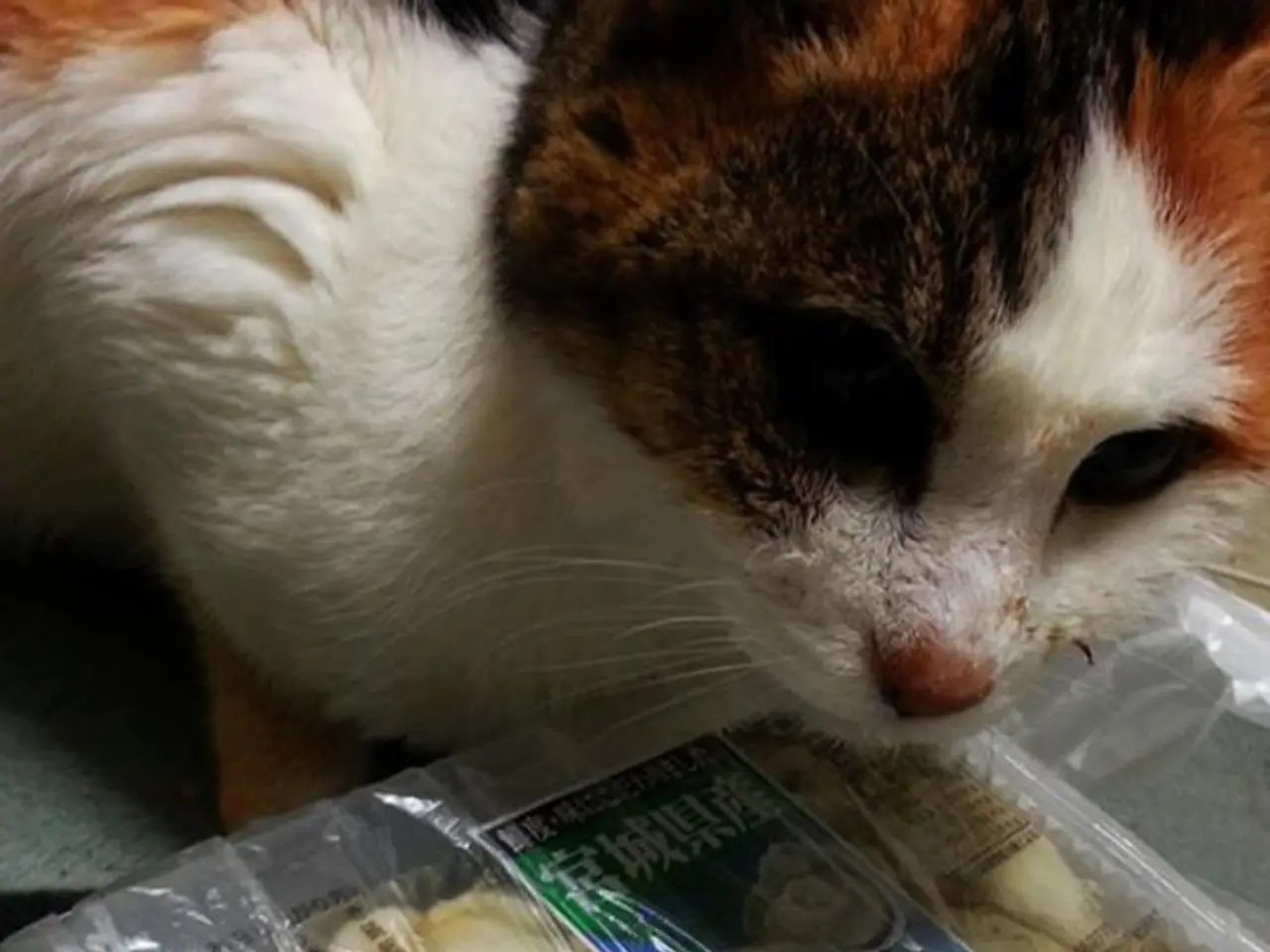Rapid Cat Feeding: Solutions for Cats That Consume Their Food Too Swiftly
In the world of feline nutrition, it's not just about what your cat eats, but also how and when they eat. Eating too quickly can lead to various issues, such as regurgitation, stomach upset, and even obesity. Here are some practical solutions to slow down your cat's eating speed, thereby improving digestion and reducing stress.
Cats, by nature, eat quickly to avoid losing their food to others in the wild. This instinctual behavior can carry over to domestic cats, causing them to eat their meals in a flash. However, there are other reasons why your cat might be eating too fast. These include medical conditions like hyperthyroidism or diabetes, which increase appetite and metabolism, as well as boredom, anxiety, or competition for food.
To combat this, consider using slow feeder bowls or DIY feeders. These bowls have barriers or puzzles that force your cat to eat more slowly by requiring extra effort to access the food. Another method is scatter feeding, where you spread dry food around the floor or in multiple small servings. This encourages exploration and slower eating, reducing regurgitation.
Increasing enrichment and play is also crucial. By reducing boredom and anxiety through toys and interaction, you can help reduce compulsive eating behaviors. If your cat is eating fast accompanied by weight loss or other symptoms, it's important to rule out medical causes like hyperthyroidism or diabetes through veterinary assessment.
Other solutions include hiding small amounts of cat food around the house to engage your cat's natural hunting instinct and slow down eating. Spreading a cat's food out in a 9x13 inch baking pan can also help. Squashing wet cat food can make your cat lick it, slowing down the eating process. Adding water to cat food (both dry and wet) can help your cat feel fuller for longer.
Specialized cat treat toys that must be nudged and pushed around can also help slow your cat's eating. The LickiMat Casper, for instance, is a recommended option that provides mental stimulation while slowing down eating. It is BPA, PVC, phthalate, and silicone-free.
For cats with megaesophagus or swallowing issues, anti-vomit bowls might be helpful. These bowls allow gravity to assist in moving food from the mouth to the stomach. However, they do not prevent vomiting and should not replace medical care. The Frisco Double-Sided Ceramic Elevated Cat Bowl is an example of an anti-vomit bowl.
In conclusion, by implementing these strategies, you can not only improve your cat's digestion and reduce vomiting but also help prevent obesity related to fast eating and excessive begging. Remember, a happy, healthy cat is a purring one!
[1] Godfrey, Dr. Hannah. "Why Do Cats Eat So Fast?" Vetstreet, 2021. [Online]. Available: https://www.vetstreet.com/our-pet-experts/why-do-cats-eat-so-fast [2] "Slowing Down Your Cat's Eating Speed." PetMD, 2021. [Online]. Available: https://www.petmd.com/cat/slowing-down-your-cats-eating-speed [3] "Slow Feeder Bowls for Cats." PetMD, 2021. [Online]. Available: https://www.petmd.com/cat/slow-feeder-bowls-cats [4] "How to Slow Down a Cat's Eating." Hill's Pet Nutrition, 2021. [Online]. Available: https://www.hillspet.com/cat-care/nutrition/how-to-slow-down-a-cats-eating
- Domestic cats, in their natural behavior, tend to eat quickly to prevent losing their food to others, a habit that can lead to various health issues like regurgitation, stomach upset, and obesity in pets.
- Cats with hyperthyroidism or diabetes might eat too fast due to increased appetite and metabolism, so it's essential to rule out medical causes through veterinary assessment.
- Slow feeder bowls or DIY feeders are effective in slowing down a cat's eating speed, as they have barriers or puzzles that require extra effort to access food.
- Scatter feeding, by spreading dry food around the floor or in multiple small servings, encourages exploration and slower eating, thereby reducing regurgitation.
- Increasing enrichment and playtime can help alleviate boredom, anxiety, and competition for food, ultimately reducing compulsive eating behaviors in cats.
- The LickiMat Casper toy, for instance, provides mental stimulation, slowing down eating, and is free from BPA, PVC, phthalate, and silicone.




